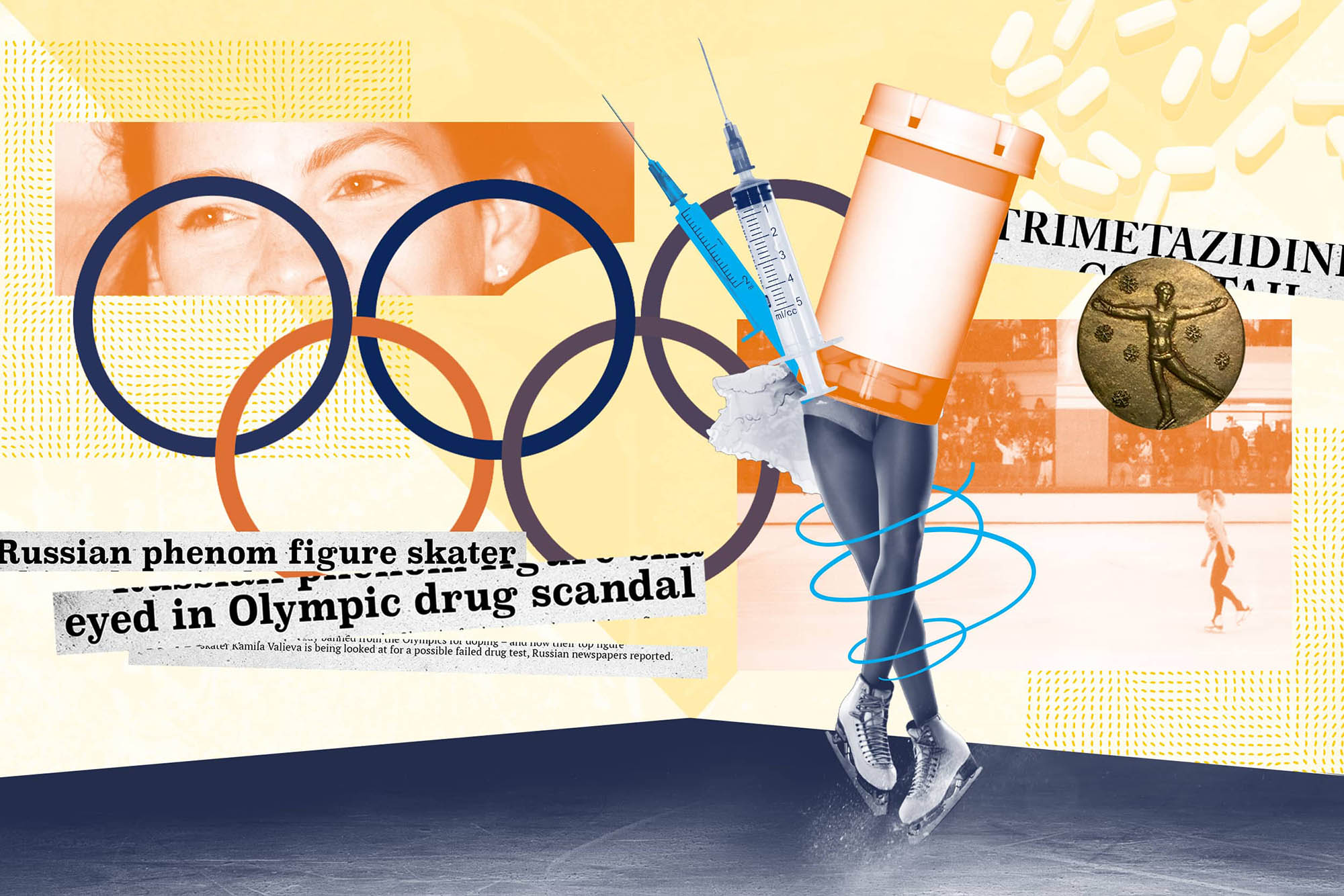When it comes to figure skating, we’ve seen some truly unusual things at the Olympics over the years.
Before the 1994 Olympic Games, Tonya Harding’s ex-husband orchestrated an attack on her rival, Nancy Kerrigan; in the 2002 pairs figure skating, two teams of skaters were awarded gold medals following allegations that the event had been fixed.
What has happened at this year’s Games in Beijing has to be right up there.
Last week, it came to light that Kamila Valieva, a 15-year-old figure skating star from Russia, had tested positive for a banned substance in December. In and of itself, that wouldn’t have been that out of the ordinary – except for the fact that Valieva was allowed to continue competing.
Valieva’s lawyer has argued that her positive drug test was caused by contamination from her grandfather’s heart medication.
What made the situation particularly hard to fathom was the fact that the Olympics typically has zero tolerance when it comes to doping.
Making things truly bizarre was the fact that if Valieva had medaled, the International Olympic Committee would not have held a medal ceremony for any of the skaters, since there was a chance the results, whatever they wound up being, could still get overturned.
But on Thursday morning, Valieva – perhaps undone by the media spotlight – fell several times during her final skate and took fourth place.
For perspective on everything that transpired, UVA Today turned to University of Virginia media studies professor Chris Ali, himself a former competitive figure skater.
Q. Were you surprised Valieva was allowed to continue competing?
A. Not only was I surprised that the IOC and the [International Skating Union] allowed her to keep competing, but I was extremely disappointed. This is a terrible precedent going forward in figure skating – and made worse because she is so young. We don’t know all the details yet … but she’s 15 years old.

Media studies professor Chris Ali, once a competitive figure skater, hopes to see another crackdown on doping. (Photo by Dan Addison, University Communications)
The IOC said that not allowing her to compete would cause “irreparable” harm. First of all, I thought that was a very weird way of phrasing something. And second of all, we either hold someone to the rules or we don’t. What is the harm that is being done to the other athletes in the women’s short and long programs? We should also be thinking about them because the reason we have anti-doping laws on the books is to keep the competition as fair as possible.
Q. Can you imagine what it would be like to be one of her competitors?
A. No, I can’t imagine the anxiety, the nerves, and the pressure that is already so poignant, and now you’re in this politically charged situation where all eyes are on this young woman.
Q. As someone who experienced a lot of mental pressure in the sport when you were a teenager, can you imagine what it would like to be in her skates?
A. I absolutely can’t. It took me years to realize that I tended to choke under pressure. I can’t imagine the pressure that this young woman [was] facing. I don’t know what her legacy is going to be. There is still so much that we don’t know. But what we do know is that she failed a drug test. It just goes back to that.
Q. What do you think of the U.S. media coverage of it?
A. I can’t remember the last time figure skating got this much coverage. Probably not since the judging scandal in 2002 and in 1994 with Nancy Kerrigan and Tonya Harding. But I think there have been a couple interesting lines of commentary. One of them, of course, is the development in women’s figure skating of triple axels and quads.
But coupled with that is one thing I was really surprised to see in the coverage is the differences in landing very difficult jumps as a teenager versus, say, someone in their 20s, particularly women. It has been, “Why is it that all these young kids are doing all these quads and triple axels?” I don’t like how young the sport has gotten, and I’ve seen some news commentary agree with me. The sport is getting so much younger and I feel we are losing something in the sport of figure skating.
Q. How so?
A. Quads [jumps that involve completing four complete rotations in the air before landing] are super awesome, but would I rather see a really good skater than a really good quad? Yes. I look for the whole package when I watch figure skating. And so when someone takes 30 seconds out of a four-minute program to line up a quad, that is not as impressive to me as someone who combines the jump as an integrated part of the program.
If what we’re looking for is just the quad, then why don’t we just do extreme jumping, where everyone goes out and shows their best quad flip? Is that what we want out of the sport? But it seems like that is where the sport is going. We’re losing the ‘figure part’ of figure skating.
Q. Controversy aside, what are your thoughts on Valieva’s skating ability? Have you ever seen someone so young who is so good?
A. She’s incredible, just incredible. In my own competitive career, I could have never done this. Even the quads we were talking about 20 years ago, we were talking about just one quad in one program. It was like, “Will they do the quad?” Only two women were doing triple axels.
Now in women’s skating, I think we saw nine triple axel attempts in the short program – amazing. And everyone’s busting out quads everywhere.
Q. What do you think the decision to let Valieva compete says about the sport, as well as larger political tensions?
A. I need the full story. The fact that we don’t have the full story is as equally suspicious. I do feel like every other time there has been a doping issue, we haven’t hesitated. The athlete was out of the competition. We’ve banned athletes for years.
I think this will do, if not material harm to the IOC in terms of “Will people turn away from the Olympics?,” certainly reputational harm. How can we trust sports governing bodies when you’ve got 99% of athletes paying very strict attention to the rules and then an athlete just skirts through, if that is the case?
Whether or not you’re second or 30th, you’re all Olympians and I would hate that somebody’s Olympic experience is tainted by another competitor, because it should only be amazing memories for these people.
Q. In the aftermath now, what will you be watching or paying special attention to? What are you hoping to see?
A. I would love to see another level of crackdown on doping. Clearly the sanctions against Russia involving doping did not stop this situation from happening. And so is there a reconsideration of that?
But if there’s one thing figure skating knows how to do, it’s how to bounce back from a scandal. The entire move to a points system was the 2002 Olympics with the judging scandal. So I will be very closely watching the International Skating Union to see what their new rules will be going into the new season in the fall – if we’ll see much more stringent anti-doping requirements. And I’ll be watching, too, [to see] if there will be any legal proceedings coming after these Olympics.
None of this makes sense. Clearly the public is missing something. And what is that something? What was going on behind the closed doors was, to me, as intriguing as the results of the women’s long program.
Media Contact
Article Information
February 17, 2022
/content/figure-skating-professor-explores-ramifications-olympic-controversy

